The Wicked Witch of the WEF Strikes Again: The Hefty Price Tag for the Climate Change & Ukraine agendas in the 2023 Budget
by Dan Fournier, Commentary, published Wednesday, March 29, 10:07 EDT on fournier.substack.com
This post is segmented as follows:
Introduction
The Climate Hoax Deception
Canadians already on the hook to pay for it all
The Hefty Price Tag for the Climate Change & Ukraine agendas in the 2023 Budget
Brief Conclusion
So, if you are pressed for time, feel free to skip directly to section 4 for the juicy tidbits about the 2023 budget.
Quick Summary: Finance Minister Chrystia Freeland’s 2023 budget reveals that over $73 billion is being earmarked for two projects alone, namely the so-called Climate Crisis and the War in the Ukraine. It has been quite predictable that billions more were to be allocated to the former due to the reasons outlined in the first part of this article. More plundering is apparent throughout the pages of the budget, but for the sake of this post they will be left aside.
1. Introduction
While most of the mainstream press will be focusing on cherry-picked items such as various [minuscule] tax credits for Canadians to alleviate the effects of rampant inflation which has been caused by reckless federal spending in recent years, this author will mostly concentrate on the hidden elephant buried in Budget 2023, namely the mammoth amount of federal spending earmarked for the greatest scam of the 21st century – the Great Climate Hoax.
I’ve reported on this issue in the past with the following articles:
EXPOSÉ: Canadian Residents & Businesses are about to be Carbon-Taxed into Oblivion
summary: This post outlines the precise means (ways) and parties (institutions) that are scheming to force carbon taxes on individuals and businesses for years to come and for which there seems to be little possibility of escape.Trudeau & Freeland set to Carbon-Tax Canadians $140 billion yearly
summary: This post exposes how Chrystia Freeland’s Canada Growth Fund is nothing more than a giant climate vacuum cleaner that intends to suck between $125 billion and $140 billion of tax payer money each and every year until 2050. This is not hyperbole, as it is fully sourced with official Canadian budget (and other) documents attesting to these figures.Senator grills Freeland over $2 billion Blank Cheque
summary: This post exposes how Finance Minister Freeland had asked for $2 billion without disclosing at all how it will be spent for her Canada Growth Fund pet climate change scam project.Canada joins WEF First Movers Coalition to Solidify Carbon Tax Looting Scheme
summary: This post shows how World Economic Forum (WEF) agents in Freeland and Trudeau have ceded our national sovereignty by submitting to the globalist outfit’s First Movers Coalition which will further solidify the globalists’ carbon tax looting scheme; these unelected private global players have a huge skin in the heist and will profit dearly on the backs of Canadian taxpayers and those from many other countries around the world.Chrystia Freeland’s Conflicts of Interests with the WEF & Ukraine
summary: This post shows the numerous conflicts of interests Freeland has with the World Economic Forum (WEF) and how she is using and abusing her positions as Finance Minister and Deputy Prime Minister for her own personal interests as well as to advance those of the WEF, all to the detriment of Canadians.Google & Al Gore’s Climate TRACE Coalition to track global carbon emissions
summary: This is another post that attests to the lie and absurdity of the great Climate Change hoax.
In a nutshell, it is fairly obvious for anyone with a few active brain cells to see what all these climate transition 2030 strategies and so-called net-zero by 2050 machination schemes of trickery and deception are really all about, namely carbon-taxing the crap out of individuals and businesses for years and decades to come.
2. The Climate Hoax Deception
To present the justification for such massive amounts of climate-related spending – not only at the federal level, but also the provincial and municipal levels – tricks and treachery, including instilling fear in the populous, are the principal means by which it can be pulled off.
Probably the vast majority of Canadians have a genuine love for the natural environment and wish to do their part to keep it clean and unpolluted. That is a given.
However, the extent to which this climate cult ideology – which has been largely led by the globalist outfit in the World Economic Forum – is exploiting that vulnerability is quite nefarious and shameful to say the least.
Peoples’ thoughts and perceptions on the matter are easily mouldable.
Fear has been the main driver of this Mass Formation Psychosis (let us call it for what it really is).
For decades, the climate doomsdayers have been shouting from rooftops that the world is coming to an end if we don’t act now to reverse the trend.
Yet year after year, they are proved wrong.
All means have been employed to reinforce the narrative whether it is through high-level useful idiots such as former U.S. Vice-President Al Gore, or a Swedish teenager with Asperger syndrome.
Kidding aside…
We can retrace the origins of this ‘Climate Change’ hoax (formerly called ‘Global Warming’) all the way back to the 1960s when an elitist think tank outfit called the Club of Rome fabricated this so-called “crisis”.
As per the former Australian politician Ann Bressington’s speech about UN Agenda 21 from a few years ago, she stated the following:
“Ladies and gentlemen, the origins of the environmental movement as we see it began back in 1968 when the Club of Rome was formed. The Club of Rome has been described as a crisis think tank which specialises in crisis creation. The main purpose of this think tank was to formulate a crisis that would unite the world and condition us to the idea of global solutions to local problems. In a document called The First Global Revolution, … it stated: ‘In searching for a new enemy to unite us, we came up with the idea that pollution, the threat of global warming, water shortages, famine and the like would fit the bill.’ …, that’s the origin of global warming ladies and gentlemen.”
This agenda, therefore, has been in the works for nearly half a century. Accordingly, it is no wonder that it has metastasized into an extremely gargantuan and elaborate web of deception.
Sadly, those pushing this agenda have been extremely effective and efficient in presenting its case as a genuine and legitimate one through climate models, international conferences, countless NGOs, along with the brainwashing of the global masses which have been told over and over that the planet would keel over in the next decade if we didn’t take action now.
On a final note for this section, it should be observed that this author is not entirely a climate change “denier.”
Climate is (and has always been) constantly changing due to both natural and man-made factors such as pollution.
Though not an expert in the field nor a climatologist, from what I have been able to assimilate over the years on the subject leads me to believe that a lot of climate change is due to natural cycles. I would rather focus on data-driven analyses over the hyped-up contentions of those pushing the agenda – either knowingly or unwittingly – with ulterior motives or sheer stupidity.
Here are some resources that pertain to real climate science for those who may be interested in the complex subject.
1,200 Scientists and Professionals Declare: “There is No Climate Emergency”
World Climate Declaration (WCD) signed by over 1,100 scientists and professionals
Another letter signed by 300 scientists, headed by Dr. Richard Lindzen, Professor Emeritus of Atmospheric Sciences, Massachusetts Institute of Technology
NASA Data on Land-Ocean Temperature Index: NASA data - The planet’s recent modest warming (by 1.00 degree Celsius on average since 1880, as calculated by NASA) thus has been saving millions of lives.
According to NOAA, the Earth has been in a GLOBAL COOLING TREND since Greta was 12
Book: Fake Invisible Catastrophes and Threats of Doom by Patrick Moore
Book: False Alarm: How Climate Change Panic Costs Us Trillions, Hurts the Poor, and Fails to Fix the Planet by Bjørn Lomborg
Image source: American Petroleum Institute – Natural Gas Integral to Progress in Reducing CO2 Emissions.
Image source: Wall Street Journal – We’re Safer From Climate Disasters Than Ever Before.
Image source: Tweet from Willis Eschenbach, from Watts Up With That? Blog.
3. Canadians already on the hook to pay for it all
So much ground work has already taken place to position Canada atop the global Climate Change, virtue signalling, podium.
Astonishingly unrealistic net-zero goals have been set thanks in large part to the foolish promises enabled by not only Chrystia Freeland, but also by the other Canadian WEF puppet, Justin Trudeau.
The Prime Minister has spoken on behalf of 38+ million Canadians at the United Nations Climate Change Conference UK 2021, promising the following:
Pollution (emissions) will be priced;
Canada’s oil & gas sector will essentially become extinct by 2050;
Net zero (the equivalent of zero CO2 emissions) is an unyielding goal to be met by 2050;
New gas-powered cars and diesel-powered trucks will be completely prohibited by 2035.
Canadian Prime Minister Justin Trudeau speaking at the United Nations Climate Change Conference UK 2021 [43:33 to 48:53 mark].
More specifically, Trudeau said the following (some of which are outright deceptive lies):
“Canada is warming, on average, twice as quickly as the rest of the world. And in our north, it’s three times quicker.”
“The science is clear. We must do more, and faster…We’ve already laid the groundwork. In 2015 at the Cop in Paris, I committed that Canada would put a price on pollution…And Canadians supported it, in our last two elections.”
“We know, pollution pricing is key to getting emissions down while getting innovation up and running. Our carbon price trajectory is one of the most globally ambitious ones. And it’s rising to $170 a ton in 2030. This is a meaningful price on pollution designed not just to make life cleaner, but also make life more affordable and less expensive for Canadians.”
“…Just as globally we agreed to a minimum corporate tax, we must work together to ensure it is no longer free to pollute anywhere in the world. That means establishing a shared minimum standard for pricing pollution.”
“Of course, what’s even better than pricing emissions, is ensuring they don’t happen in the first place. Which brings me to my next major commitment: we’ll cap oil & gas sector emissions today and ensure they decrease tomorrow at a pace and scale needed to reach net zero by 2050. That’s no small task for a major oil & gas producing country. It’s a big step that’s absolutely necessary.”
[in French]:“C'est pourquoi le Canada s'est fixé comme objectif de vendre uniquement des voitures zéro-émissions et d'établir un réseau d'émission d'électricité à être émissions-nettes-zéro d'ici 2035. ” translated to English: “That's why Canada has set a goal of selling only zero-emission cars and establishing an electricity emissions network to be net-zero emissions by 2035.”
A few of the key takeaways about Trudeau’s promises include, but are not limited to, the following:
Carbon [emissions] will be taxed (and paid by all individuals and businesses)
The Oil & Gas sector will be severely hindered and punished
4. The Hefty Price Tag for the Climate Change & Ukraine agendas in the 2023 Budget
The two main areas of interest in Canada’s 2023 budget appear to be for Climate Change-related endeavours and support for the Ukraine, Chrystia Freeland’s beloved and cherished ancestral motherland.
The Climate Change Price Tag
For sake of getting this article posted as quickly as possible, a full analysis of each component that is integral to the Canadian climate change agenda will be left aside; instead, pertinent financial highlights and proposed key measures from the budget will be presented below. And some notes/observations will be added for context.
In addition, a rough total estimate will be provided, though this amount may be earmarked for years beyond 2023 and not solely for the 2023-2024 fiscal year.
Note that the larger (388 page) PDF version of the budget was used for this, and accompanying page numbers will be provided for reference.
Bolded figures appear to be new, or additional costs for the endeavour at hand that will be burdened by Canadian taxpayers which are in addition to non-bolded figures which are already known (and many of which have been omitted from this post).
Key Financial Highlights:
“The scale of investments that Canada requires to reach net-zero by 2050 is significant, with estimates ranging from $60 billion to $140 billion per year on average.” (Page 17)
Canada Growth Fund: “$15 billion for the Canada Growth Fund to incentivize private sector investment into projects and companies that will grow Canada’s clean economy at speed and scale.” (Page 69)
“$8 billion for the Net Zero Accelerator to make large-scale investments in clean technologies;” (Page 69)
“$4.2 billion for the Low Carbon Economy Fund to support the installation of emission-reducing technologies for provinces and territories,” (Page 69)
“$3.8 billion for Canada’s Critical Minerals Strategy, which will help make Canada a global supplier of choice for the critical minerals that are the bedrock of clean and digital technologies;” (Page 69)
“$3.9 billion to make zero-emission vehicles more affordable for Canadians and Canadian businesses, and to build new charging stations across Canada;” (Page 69)
“$1.5 billion for the Clean Fuels Fund;” (Page 69)
“$33.5 billion for the Investing in Canada Infrastructure Program to support new investments in public transit; green infrastructure;” (Page 69)
“$350 million over three years in international biodiversity financing…to support developing countries’ efforts to protect nature;” (Page 162)
TOTAL FUNDS EARMARKED FOR THE GREEN TRANSITION / CLIMATE CHANGE: approximately $70 billion (a conservative estimate given that this is only a preliminary examination of the 2023 budget).
It should also be noted from the first point above that to reach the to reach net-zero by 2050, anywhere from $60 billion to $140 billion will be required per year for the next 27 years. This is not far off than what this author has previously reported in a prior post on the subject (see Trudeau & Freeland set to Carbon-Tax Canadians $140 billion yearly).
Moreover, as per a March 28 Epoch Times article about the 2023 budget, a senior government official who the news outlet spoke with said that $100 billion per year is needed to drive capital investment [into these green technologies] instead of the $15-$20 billion a year that is currently deployed to this effect.
As was noted in my post, should the maximum amount of this range – $140 billion – be applied on a yearly basis, considering a population of 38 million, such a carbon-tax burden would amount to $3,684 per Canadian per year, or around $11,000 to $14,700 or more per household per year.
Key Measures:
“it is critical that governments invest in policy frameworks capable of mobilizing private capital.” (Page 17), notes/observations: “policy frameworks” most likely refers to how private sector participants will be incentivised, i.e., forced, to report their carbon scores via the related climate reporting mechanisms. I have documented this apparatus in full detail in a post from last year.
“Canada has the potential to become a clean electricity superpower with a cross-Canada electricity grid that is more sustainable, more secure, and more affordable.” (Page 67) notes/observations: “clean electricity” is a major component of the net-zero target and players across the country, especially at the provincial level, will be on the hook for its implementation. An explanatory graph will be provided further below for additional context.
“The accelerating transition to net-zero has started a global race to attract investment as our friends and allies build their clean economies. Canada must keep pace. We cannot afford to fall behind.” (Page 70) notes/observations: this “must-act-quickly-before-it’s-too-late” is the same kind of language Chrystia Freeland used when she desperately asked for $2 billion upfront for the Canada Growth Fund without revealing at all how the funds would be spent.
“Putting in place a federal carbon pricing system, which puts money back in the pockets of Canadians and gives businesses the flexibility to decide how best to reduce their emissions;” (Page 69), notes/observations: put simply, the intention here is to implement a nationwide carbon pricing system by which businesses (and consumers, indirectly) will be additionally taxed on these so-called carbon emission footprints.
“Budget 2023 announces that the government intends to introduce legislative amendments to enable the Public Sector Pension Investment Board (PSP Investments) to manage the assets of the Canada Growth Fund to deliver on the Growth Fund’s mandate of attracting private capital to invest in Canada’s clean economy…By partnering with PSP Investments, the Canada Growth Fund will be able to move quickly and begin making investments to support the growth of Canada’s clean economy.” (Page 86) notes/observations: put simply, the PSP manages investments for a significant proportion of Canada’s public sector pensions plans; and what is most likely to happen is that the PSP will be required to only (or mostly) invest in “low-carbon footprint businesses”, i.e., those with acceptable carbon emissions scores. Once again, I exhibited this scheme in a previous post.
The above are only some of the measures that this author has been able to identify in this short period of time to review the 2023 budget. Likely, there may be more that will have to be identified and scrutinised.
The following diagram also appears which purports to the overall “clean economy” in line with the Climate Change and net-zero goals and strategies undertaken by the federal government. It should be observed that carbon pricing mechanisms will be central to these.
Diagram presented for Canada’s Plan for a Clean Economy in the 2023 Budget, page 74.
In addition, the “clean electricity” project appears to be an important component. For this, the following graph provides additional insight as to how they will require provinces to keep in line with this project. This graph was produced by the Canadian Climate Institute which is a key partner to the federal government in its net-zero endeavour.
Canadian Climate Institute’s The Big Switch.
As can be noticed in the diagram above, provinces will be required to “implement electricity policies aligned with net zero,” i.e., all public (and most likely private) sector utilities will be forced to transition to low carbon emitting sources, likely having to follow set emission standards and pay penalties for exceeding carbon quotas.
Also mentioned repeatedly in the 2023 Budget is the need for private investment and private-sector participants into this green transition. Now, this will surely become a HUGE challenge for the federal and provincial governments due to the lack of financial incentives for participants.
A February 21, 2023 report on environment and policy-making by Policy Options, a digital magazine of the Institute for Research on Public Policy (IRPP) based in Montreal, titled Optimizing Canada’s policy toolbox for clean growth notes several of these challenges [with emphasis added for context and relevancy]:
“To achieve net-zero emissions by 2050 and to build a vibrant, inclusive and resilient economy, Canada needs to mobilize private investment – and fast – toward clean technologies, projects and businesses.”
With this statement, it’s almost as if they are presenting a Hegelian dialectic (Problem-Reaction-Solution) to justify the means by which to implement the ‘Solution’. In other words, Canada needs to “act fast” by mobilising private investment in order to achieve the net-zero emissions target by 2050, even though that is 27 years from now.
But the article then rewinds to some of the hurdles, or ‘Problem’:
“But Canada’s track record with mobilizing private investment has been insufficient. How can Canadian governments attract investment to advance clean growth as quickly and as efficiently as possible?”
Once more, there is a sense of urgency, as is the case with the climate doomsdayers. Moreover, they acknowledge the lack of private investment in these kinds of clean energy endeavours. And, for good reason. For, investing in such projects requires a tremendous amount of time, expertise, and capital. And these are barriers that not many firms are willing to surmount, at least willingly.
Accordingly, they need a little bit of a push. That push comes mostly in the stick form rather than the carrot form. In other words, only through carbon pricing mechanisms will they be incentivised to submit, as the article further notes:
“While the task may be challenging, it is possible for Canada to keep up with its allies and trade partners in navigating this transition. Ottawa needs to further strengthen the most effective tool in its collection – carbon pricing – and add new tools to directly address the remaining barriers to mobilizing private investment.”
The idea of putting a price on carbon isn’t new at all, and has been around since at least 2018. Justin Trudeau mentioned Canada’s (or is it the WEF’s?) commitment to price carbon as he stated in the aforementioned 2021 United Nations Climate Change Conference UK conference.
For those unfamiliar with carbon pricing schemes, a pretty video good primer can be accessed from Canada’s Ecofiscal Commission, an outfit based in Montreal at McGill University. The author who is the chair of Ecofiscal basically explains in his introductory video that a price will be placed on carbon; and it is quite evident that it will be individuals and businesses that will pay for it through carbon taxes. Moreover, he clearly states that households will be affected by these carbon taxes. In other words, citizens and consumers will ultimately be on the hook for these egregious taxes since businesses usually pass on these expenses to them.
Perhaps more disturbingly, the chair of Ecofiscal mentions that carbon pricing will be “ramped up” over time. That is to say, that those who set carbon prices will have the ability to increase the amount of carbon taxes to be levied on businesses and individuals at will, and without restraint.
The video is quite an overt, or in-your-face, mocking display of how us plebs are being corralled into inescapable vice grips of the carbon tax man.
The Policy Options video adds to this point:
“The national minimum price on carbon pollution will increase to $65 a tonne of greenhouse gas emissions (GHG) on April 1 and will go up to $170 a tonne by 2030.”
Along with ‘incentives’ for investors:
“Also, strengthening carbon pricing for industry across all provinces and territories can further reinforce decarbonization incentives for investors.”
So much more can be said about carbon price and taxing schemes and much has been discussed in this authors articles referenced near the top of this post.
But, suffice it to say, for now, that this Climate Change carbon tax looting scheme is far from over and Canadians either need to start pushing back against these very costly policies, or be prepared to start seeing their personal budgets and livelihoods evaporate like cow farts in the wind.
The Ukraine Price Tag
Not that the previous section was depressing enough, wait until you see what our dear Finance Minister, Chrystia Freeland, has in store for her beloved Ukraine which will be billed to Canadian taxpayers.
Similar to the previous sub-section, pertinent financial highlights will be enumerated below.
The reader should first note that over $5 billion has already been committed to the Ukraine as was described in two of this author’s previous posts and in the 2023 Budget itself (see page 162).
Bolded figures will represent new/additional spending on the Ukraine and a grand total will be presented afterwards.
“Budget 2023 provides Ukraine with an additional loan of $2.4 billion for 2023, which will be provided via the IMF Administered Account for Ukraine.” (Page 168)
“Budget 2023 proposes to provide $200 million in 2022-23 to the Department of National Defence for donations of existing Canadian Armed Forces military equipment to Ukraine,”
“Budget 2023 announces that $84.8 million in 2023-24 will be allocated by Global Affairs Canada to provide targeted support to Ukraine for humanitarian assistance, mental health support, demining, agriculture, and other priority areas.” (Page 169)
“Canada has become a safe haven for nearly 200,000 Ukrainian citizens and returning Canadian permanent residents of Ukrainian origin, including through the temporary Canada-Ukraine authorization for emergency travel. On March 22, 2023, the federal government announced that it was extending this pathway by allowing Ukrainians to apply until July 15, 2023, and arrive in Canada until March 31, 2024. To support this extension, the government has committed an additional $171.4 million over three years, starting in 2022-23.” (Page 169)
“Temporarily waiving all duties on Ukrainian imports,” i.e., foregone income, (Page 166)
TOTAL FUNDS EARMARKED FOR SUPPORTING THE UKRAINE: approximately $2.856 billion
Though not earmarked specifically for the Ukraine, it should be noted that $40.5 million has been allotted “to establish the new North American regional office in Halifax for NATO’s Defence Innovation Accelerator for the North Atlantic.”
And, strangely also concerned with NATO, it is mentioned in the 2023 budget that $40.4 million is to be provided for Global Affairs Canada and the Department of National Defence to establish the NATO Climate Change and Security Centre of Excellence.
I am not certain what NATO has to do with Climate Change, but they seem to deem it some kind of military threat stating:
“Climate change has repercussions for people, economic security, public safety, and critical infrastructure around the world. It [Climate Change] also poses a significant threat to global security, and in 2022, NATO’s new Strategic Concept recognized climate change for the first time as a major security challenge for the Alliance.”
“At the 2022 NATO Summit in Madrid, Montreal was announced as the host city for NATO’s new Climate Change and Security Centre of Excellence, which will bring together NATO allies to mitigate the impact of climate change on military activities and analyze new climate change-driven security challenges, such as the implications for Canada’s Arctic.”
There’s absurdity, and then there’s sheer absurdity. Pick the one you think is most fitting.
5. Brief Conclusion
While this was a relatively quick assessment of Canada’s 2023 budget, it is quite depressing to say the least. The manner in which this Liberal government is wantonly squandering funds for just these two causes, the Climate Change heist and the Ukraine pet project, amounts to no less than $73 billion in taxpayer money being foregone.
Such funds could have been designated for projects that actually benefit Canadians, rather than costing them.
Moreover, the Epoch Times article further notes that the [budget] “deficit will be $43 billion for the government’s fiscal year ending this month, $40.1 billion by March 2024, and is projected to improve to $14 billion in the red by March 2028.” This is totally reckless and future generations of hard-working Canadians will be on the hook for such follies. If the federal government were to lift the bogus Climate Change endeavours alone, we would have a huge surplus instead of an interest-bearing deficit which is soaring our national debt level well over a trillion dollars.
Our Finance Minister and Deputy PM in Chrystia Freeland has chosen to reveal her true, self-serving, colors via the 2023 Federal Budget. And Canadians should be angered and outraged at such a careless and reckless display of treason.
Perhaps instead of choosing black shoes when tabling her budget, she should have chosen red ones as the Wicked Witch of the West sought in The Wizard of Oz, for her quest for power appears no less than such. Or, red shoes would also have been more fitting since the budget is now in the red rather than in the black.
In Peace and Liberty,
Author note:
YouTube influencer Clyde Do Something based in B.C., mentioned this article in his April 3 broadcast.
In case you missed it, be sure to check out my previous article Wokeness is as old as the Bible, the Remedy even older.
Some articles are free, but please support the work of this independent journalist by considering a paid subscription to his Substack (for only $5 a month, or $50 a year) and following his Twitter. You can also buy him a coffee.
Disclaimer:
See the author’s About page for full disclaimer.
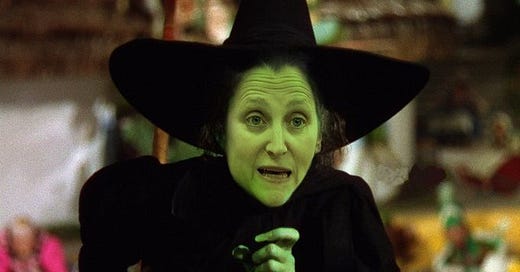





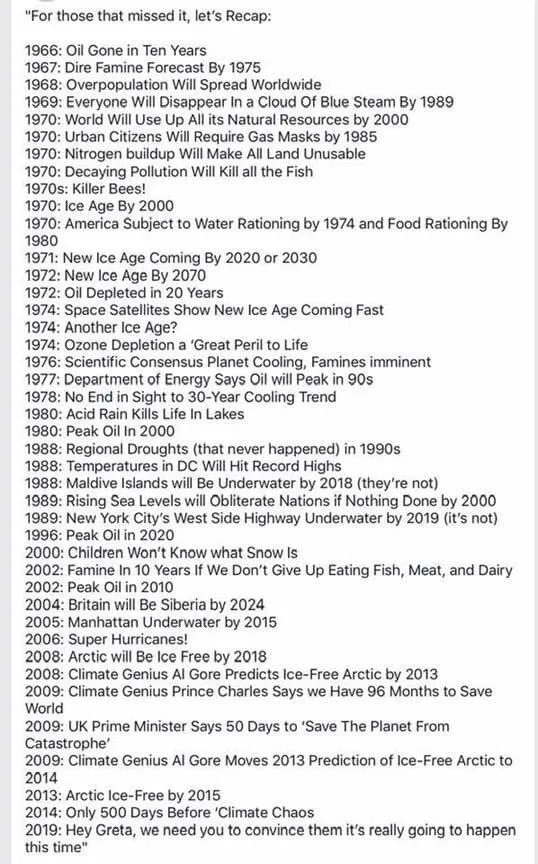

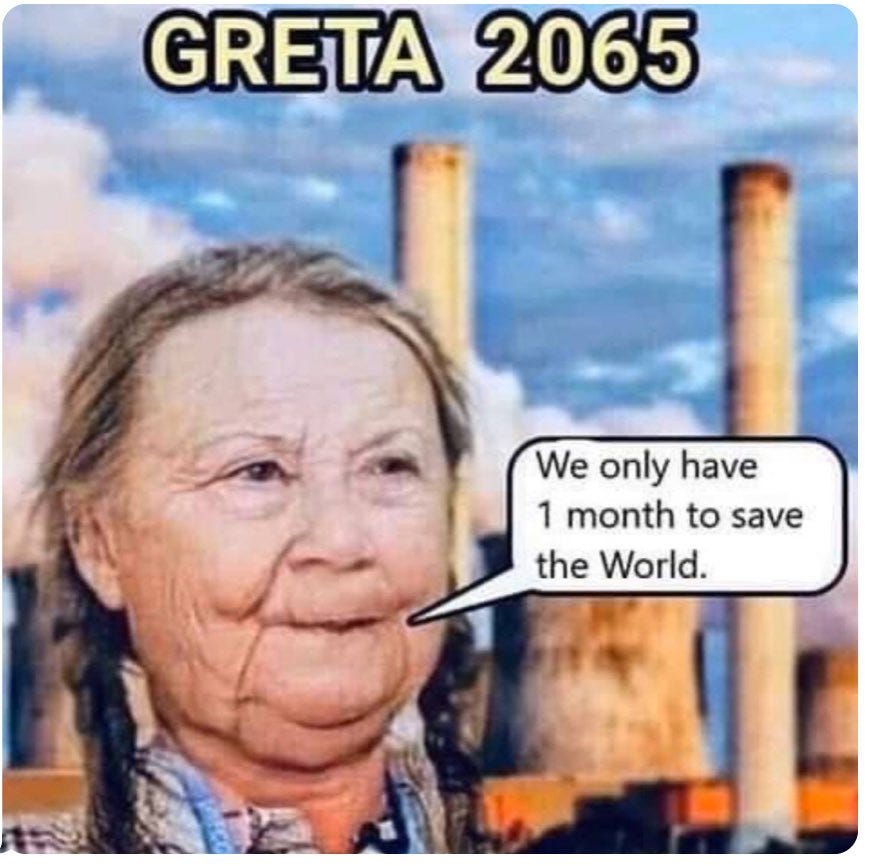


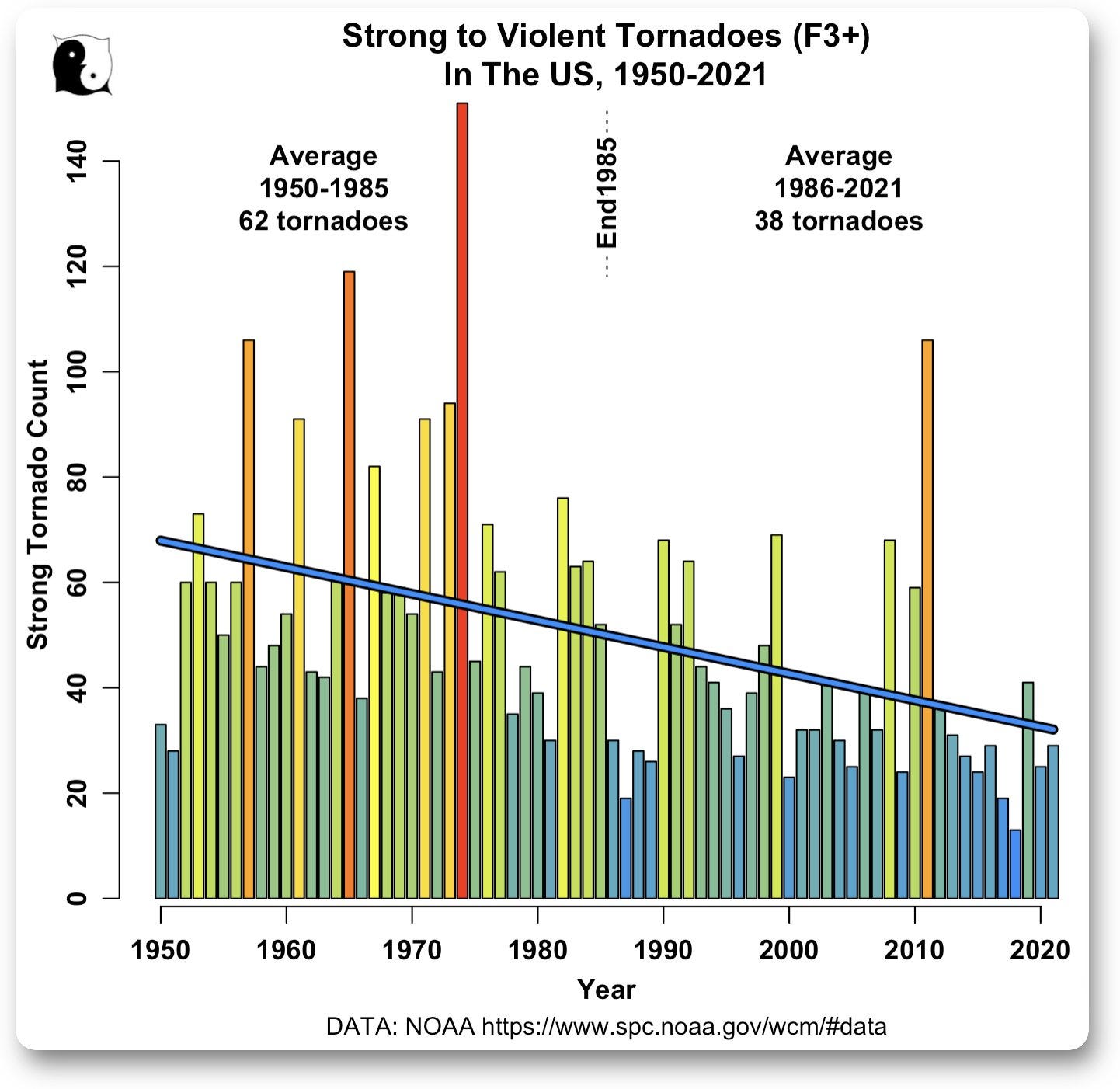
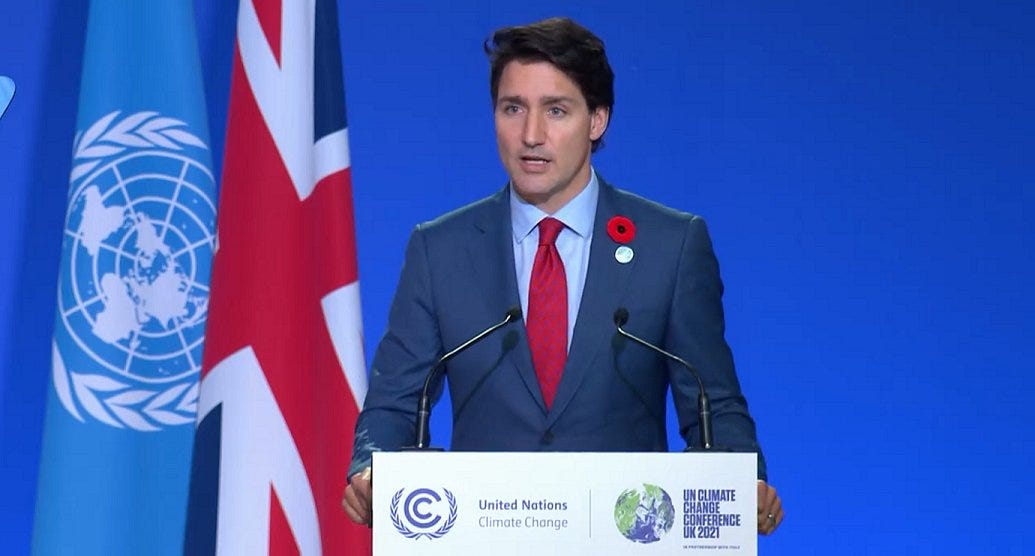
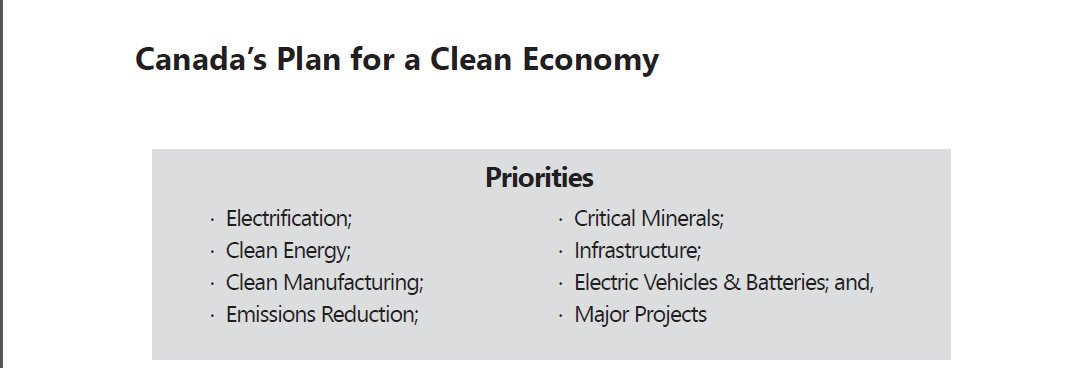
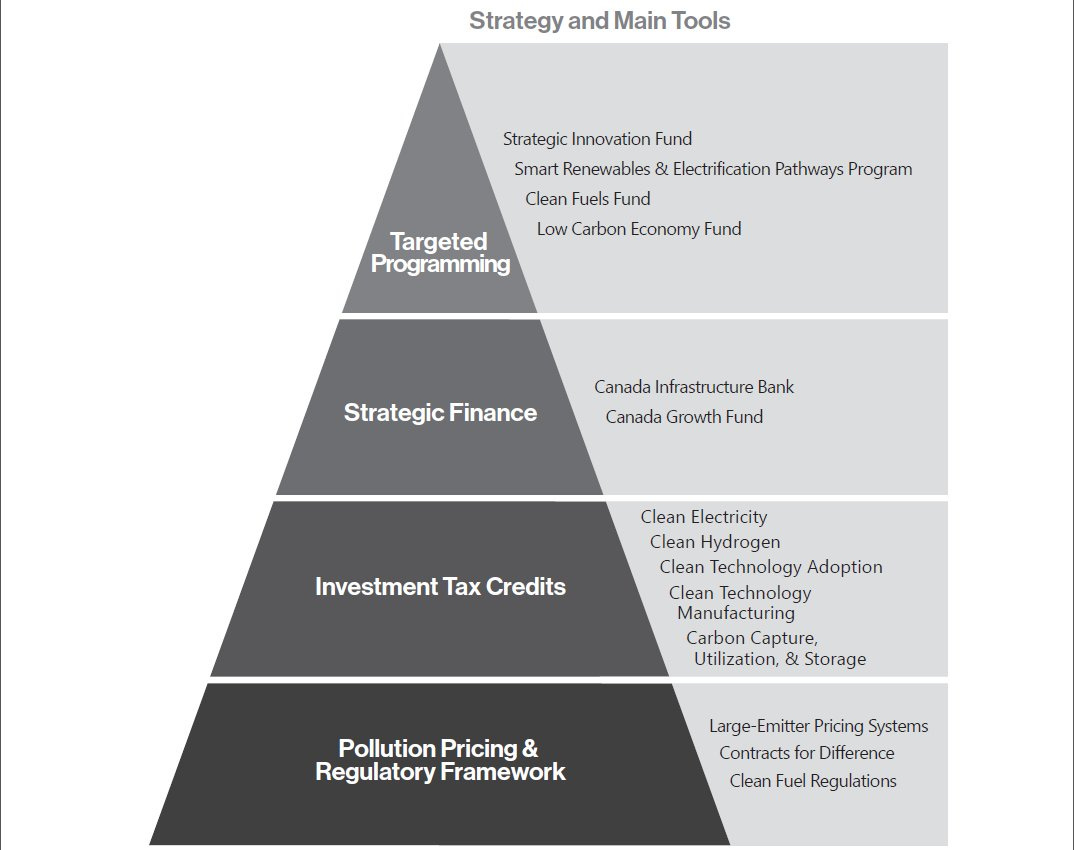
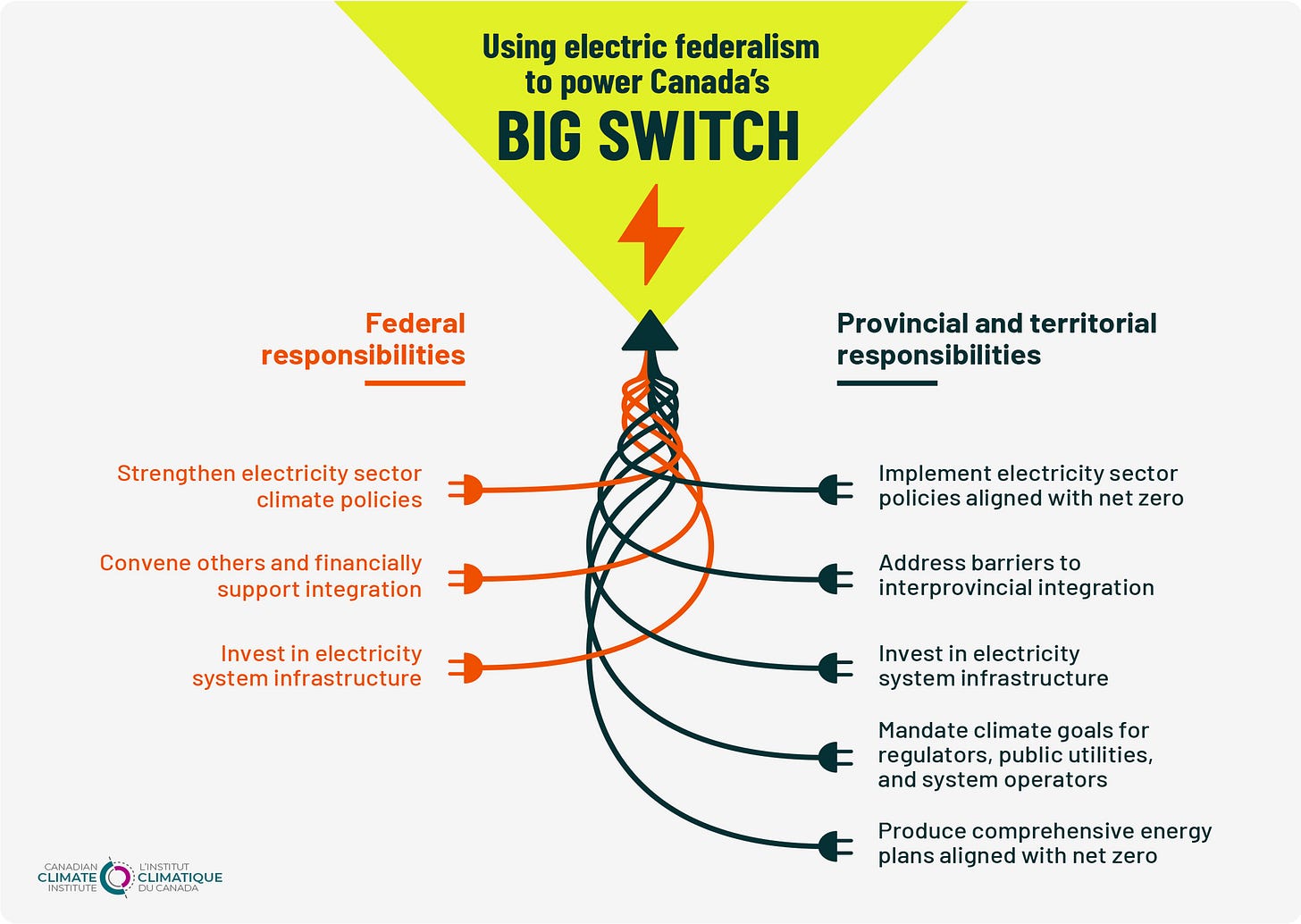

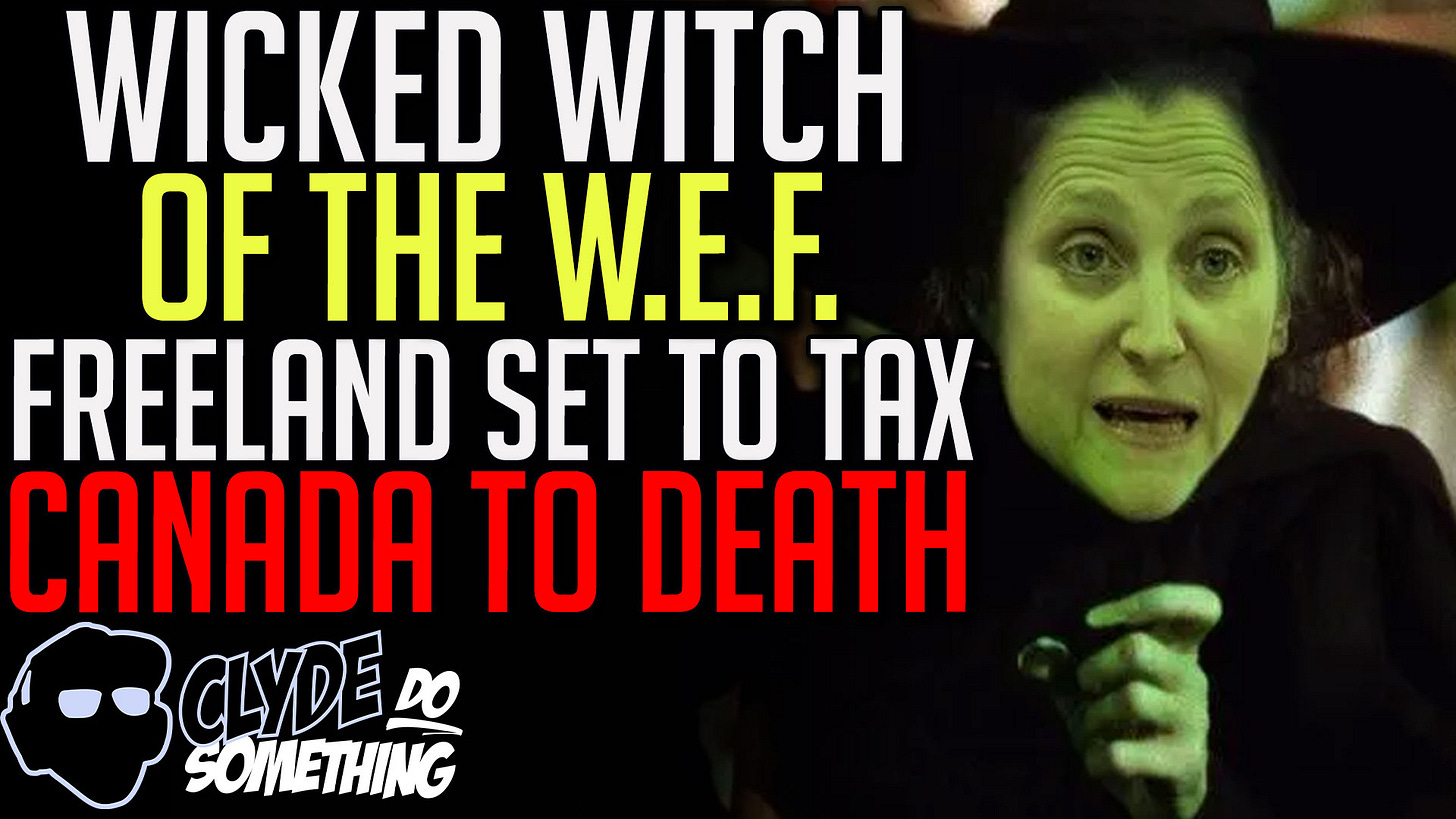




Just came across a great post showing tons more literature about the Climate Scam:
- Allan's Newsletter: THE CLIMATE AND GREEN ENERGY SCAMS
https://allanmacrae.substack.com/p/the-climate-and-green-energy-scams
It also includes links to the following two about CANADA:
1) The Great Reset: Planning the Theft of Canada?
https://fcpp.org/2022/10/02/the-great-reset-planning-the-theft-of-canada/
2) Watts Up With That? The Liberals’ Covert Green Plan for Canada – Poverty and Dictatorship
https://wattsupwiththat.com/2019/10/01/the-liberals-covert-green-plan-for-canada-poverty-and-dictatorship/
Indeed--agreed.
I would also add the hubris of epistemic prestige, ideological possession...and ultimately, the manifest existence of evil.
I enjoy good writing, which is why I am here--it is much appreciated.